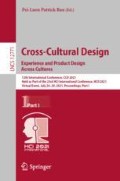Abstract
The Strategic Roadmap 2025 released by Lighting Europe described the key focuses in three development stages for the lighting market over the next 10 years. During the first stage, the focus of development lies in technology—specifically, in the application and popularization of high-efficiency LED light sources. At the second stage, manufacturers advance to the smart lighting control system, thereby achieving sustainable development through energy saving and environmental designs. At the third stage, the strategic focus lies in the mental aspect, the intention of which is to develop human-oriented lighting designs. Accordingly, well-being and health can be promoted through improvement of lighting quality. These three stages of strategy will provide new momentum for the growth of the lighting market and improve people’s quality of life. This study adopted a literature review, expert discussion, and survey analysis to identify human-oriented luminary design factors that integrate sensitivity and technology, with the aim of integrating Taiwan’s lighting technology with consumers’ emotional need and introducing emotional value in products.
Access this chapter
Tax calculation will be finalised at checkout
Purchases are for personal use only
References
Walter, A.: Designing for Emotion. A Book Apart (2011)
Slater, A.I., Boyce, P.R.: Illuminance uniformity on desks: where is the limit? Light. Res. Technol. 22(4), 165–174 (1990)
Chang, C.-Y., Shie, M.-Y., Feng, C.-C., Chang, J.-Y., Lai, S.-J.: Psychological responses toward light and heat in interior lighting. J. Design Sci. 12(1), 103–127 (2009)
Chang, C.-F., Wang, T.-Y., Liu, C.-H.: Research and analysis of the unified glare rating (UGR) of indoor lighting. J. Technol. 28(4), 243–249 (2013)
Sun, C.-C., Chen, C.-H.: Development of LED and its application in lighting. J. Adv. Technol. Manage. 2011, 1–23 (2011)
Chien, C.-W., Lin, C.-L., Lin, R.-T.: The study of period style in products. J. Natl. Taiwan Coll. Arts 99, 1–27 (2016)
Martinsons, C., Zissis, G.: Potential health issues of solid-state lighting. International Energy Agency Solid State Lighting Annex, Report number: Energy Efficient End-Use Equipment (4E) (2014)
Demirbilek, O., Sener, B.: Product design, semantics and emotional response. Ergonomics 46(13–14), 1346–1360 (2003)
Juslén, H., Tenner, A.: Mechanisms involved in enhancing human performance by changing the lighting in the industrial workplace. Int. J. Ind. Ergon. 35(9), 843–855 (2005)
Heschong Mahone Group: Daylighting in Schools. An investigation into the relationship between daylight and human performance. Detailed Report. Fair Oaks, CA (1999)
Hsiao, H.-C.: Classroom lighting status quo and improvement plan. Educat. Bimonthly 333, P13-17 (1995)
Bullough, J.D., Sweater Hickcox, K., Klein, T.R., Narendran, N.: Effects of flicker characteristics from solid-state lighting on detection, acceptability and comfort. Light. Res. Technol. 43(3), 269 (2011)
Smolders, K.C.H.J., de Kort, Y.A.W., Cluitmans, P.J.M.: A higher illuminance induces alertness even during office hours: findings on subjective measures, task performance and heart rate measures. Physiol. Behav. 107(1), 7–16 (2012)
Klepeis, N., Nelson, W., Ott, W., et al.: The national human activity pattern survey (NHAPS): a resource for assessing exposure to environmental pollutants. J. Expo. Sci. Environ. Epidemiol. 11, 231–252 (2001)
Hsiao, K.-A., Chen, P.-Y.: Cognition and shape features of pleasure images. J. Design 15(2), 1–17 (2010)
Leather, P., Pyrgas, M., Beale, D., Lawrence, C.: Windows in the workplace: sunlight, view, and occupational stress. Environ. Behav. 30(6), 739–762 (1998)
Lu, S., Liu, L., Yu, A.: Exploring the Stroboscopic analysis of lighting products and its impact on functional lighting. Light Light. 2014(4), P22-27 (2014)
Hsieh, M., Li, G.: Effects of illumination types and color temperatures on office worker’s moods and task performance from the viewpoint of eco-efficiency -a case of subjects at the age of 20–28. J. Archit. 102, P1-18 (2017)
Wang, N., Boubekri, M.: Investigation of declared seating preference and measured cognitive performance in a sunlit room. J. Environ. Psychol. 30(2), 226–238 (2010)
Norman, D.A.: The Design of Everyday Things. Basic Books, New York (1990)
Norman, D.A.: Emotional Design: Why We Love (or Hate) Everyday Things. Basic, New York (2004)
Ogando-Martínez, A., López-Gómez, J., Febrero-Garrido, L.: Maintenance factor identification in outdoor lighting installations using simulation and optimization techniques. Energies 11(8), 2169 (2018)
Pimputkar, S., Speck, J., DenBaars, S., et al.: Prospects for LED lighting. Nat. Photon 3, 180–182 (2009)
Lin, R.-T.: The integration of Human needs and technology - the Cultural Innovation. Sci. Dev. 396, 68–75 (2005)
Lin, R., Su, C.-H., Chang, S.-H. From cultural creativity to qualia. In: Conference of Taiwan Institute of Kansei. Tunghai University, Taiwan (2010)
Lin, R.-T., Lin, P.-H.: A study of integrating culture and aesthetics to promote cultural and creative industries. J. Natl. Taiwan Coll. Arts 85, 81–105 (2009)
Lin, S.-S., Ke, J.-T., Wu, C.-F.: Exploring Key Factors of LED Lamps for Writing Scenarios. J. Design, 1249–1254 (2015)
Su, W.-Z., Lin, P.-H., Han, F.-N.: The study of cultural and creative products’ emotional design and customer purchase intention. J. CAGST 213–224 (2018)
Author information
Authors and Affiliations
Editor information
Editors and Affiliations
Rights and permissions
Copyright information
© 2021 Springer Nature Switzerland AG
About this paper
Cite this paper
Chen, JF., Lin, PH., Lin, R. (2021). Exploring the Integration of Emotion and Technology to Create Product Value—A Case Study on QisDesign Lighting. In: Rau, PL.P. (eds) Cross-Cultural Design. Experience and Product Design Across Cultures. HCII 2021. Lecture Notes in Computer Science(), vol 12771. Springer, Cham. https://doi.org/10.1007/978-3-030-77074-7_17
Download citation
DOI: https://doi.org/10.1007/978-3-030-77074-7_17
Published:
Publisher Name: Springer, Cham
Print ISBN: 978-3-030-77073-0
Online ISBN: 978-3-030-77074-7
eBook Packages: Computer ScienceComputer Science (R0)

